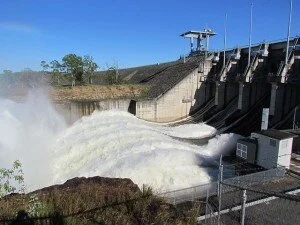Don’t let the manual be an afterthought
Image: Wivenhoe Dam by Somersetpedia.Paul via Wikimedia Commons (licence)
I’ve come across a couple of events in the media recently that have served to highlight the importance of good documentation, and the significant risks of not having a clear and credible user manual.
The first concerns anti-submarine torpedoes purchased by the Australian Defence Materiel Organisation (DMO) from a European manufacturer. Unfortunately the highly classified instructions for the weapons are written in Italian and French, but not English. DMO is now tendering for translation services.
The second, less comical example, related to the controversy over the release of water from the Wivenhoe Dam at the peak of the Brisbane flood in January 2011. The Queensland Floods Commission of Inquiry found that the procedure manual flood engineers relied upon to make decisions about releases of water was ambiguous, and that ‘a fundamental review of the Wivenhoe manual is required’ (QFCI Interim Report, August 2011 (PDF)).
In both instances it is clear that the documentation provided was not fit for purpose. More concerning is how crucial documentation seems to have been treated as a matter of secondary importance, only to result in significant loss of reputation when the deficiencies were revealed so publicly.
In the case of the Wivenhoe Dam, the Commission of Inquiry concluded that the interpretation of the manual was dependent on the understanding of the engineers on duty at the time, noting ‘the current flood engineers may agree on what to others carries a different meaning, will be useless in the event of accident or illness which incapacitates one or more of them’ (QFCI Interim Report).
The Queensland Government is now considering the recommendations of the inquiry into the floods, which left 22 people dead, caused an estimated $10 billion damage (PDF) and resulted in three-quarters of the state being declared a disaster zone.
The DMO has allowed up to $110,100 for translation of the anti-submarine torpedoes technical documentation, plus flights and accommodation.

